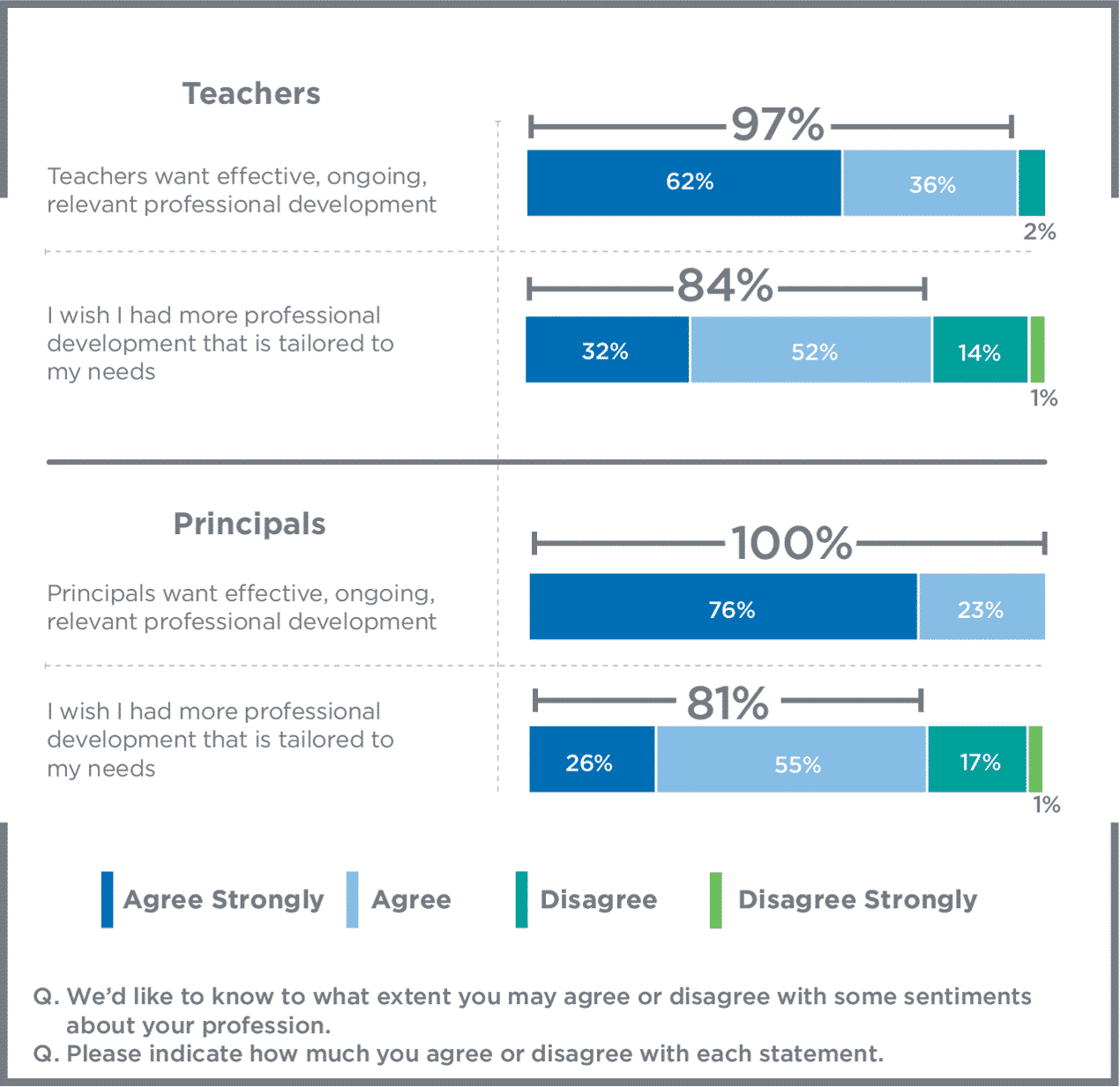The Teacher & Principal School Report: Equity in Education is a new, nationally representative report from Scholastic featuring the voices of more than 4,700 public school Pre-K–12 teachers and principals. Within the report, educators are clear in their strong belief that equity in education for all children must be a national priority and many shared that equity and equality should not be interchangeable. As one elementary school principal from Florida explained, “Equity doesn’t mean the same for everyone; it means that everyone gets what they need.”
Even as educators are united behind this idea of equity, the data in the report reveal that there is still a great deal of work needed to support every student within our schools. In fact, the majority of teachers and principals also agree that many of their students face barriers to learning from outside the school environment. The Teacher & Principal School Report explores these barriers, which take many forms.
In terms of resources, educators acknowledge that across school poverty levels, resources to help schools achieve equity are not adequately available. A large disparity is found in the access students have to books at home (69% of educators in high-poverty vs. 20% in low-poverty schools say these are not adequately available). This is a notable concern as 96% of teachers and principals also agree providing year-round access to books at home is important to enhancing student achievement. A similar percentage (91%) agrees that schools can play an important role in expanding access to books at home.
As one elementary school teacher in Minnesota shared, “We advocated for and received permission to send home books from our core curriculum for familiar rereading with families. This provides a direct link between what children do at school and what they do at home.”
The Teacher & Principal School Report also explored how educators are taking action themselves to fill the gaps in resources inside the classroom. On average, in the past year, teachers spent $530 of their own money on items for classroom or student use. In high-poverty schools, teachers spent $672 and in low-poverty schools, $495. Principals are also spending their own money—$683 on average. In high-poverty schools principals spent $1,014, and $514 in low-poverty schools. Items purchased included classroom supplies, food, clothing, and books.
Both teachers (56%) and principals (41%) are spending their own money on books highlighting a critical need. In fact, while 89% of teachers have classroom libraries, 31% have fewer than 50 books. Looking more closely at what is missing in both classroom and school libraries, the Teacher & Principal School Report identified the types of books needed. Culturally relevant titles is the number one need of teachers for their classroom libraries, followed closely by books published in the last 3–5 years, multiple copies of popular titles, high-interest, low-reading-level books, and magazines. Forty-one percent of teachers also need ebooks. eBooks are in greater demand when considering the school library, with 51% of principals and school librarians citing this as a need. Diversity in books is also a strong need among principals and school librarians, as books in other languages, culturally relevant titles and books with diverse characters are high on their list.
An additional call to action around books is found in the fact that 39% of principals report they do not have a full-time school librarian, even as 82% say that having a school library with a certified school librarian is a critical resource.
To learn more on additional viewpoints from educators on equity in education, download the full Teacher & Principal School Report: www.scholastic.com/teacherprincipalreport.
Michael Kozlowski is the editor-in-chief at Good e-Reader and has written about audiobooks and e-readers for the past fifteen years. Newspapers and websites such as the CBC, CNET, Engadget, Huffington Post and the New York Times have picked up his articles. He Lives in Vancouver, British Columbia, Canada.

